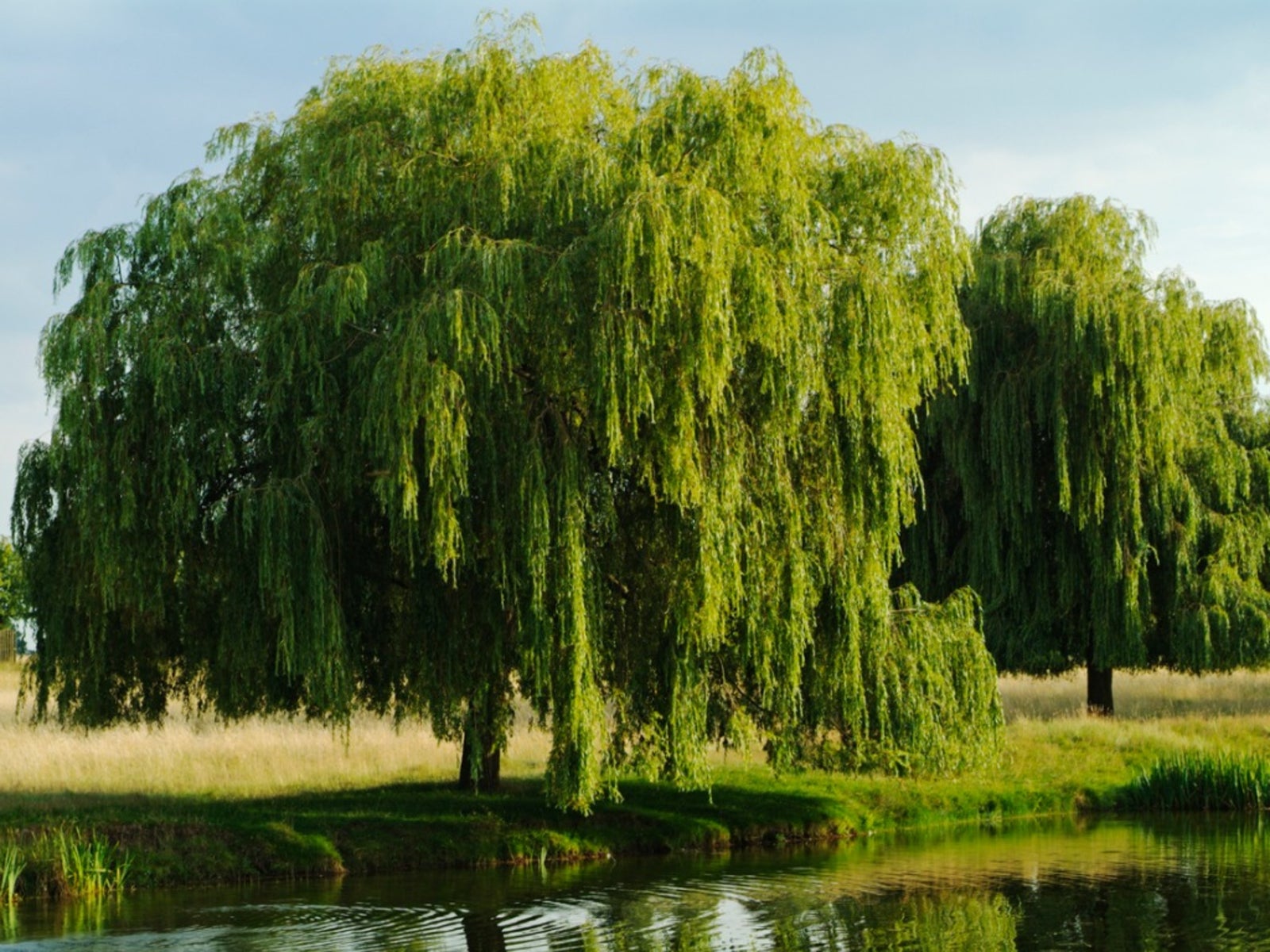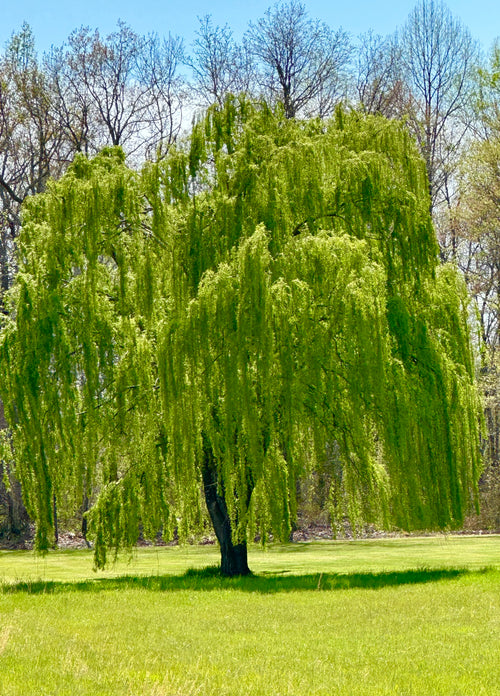Chances are, you've seen a willow tree before. However, did you know there's more to these trees than meets the eye? Willows are a type of shrub, not a tree. They're one of the oldest plants on Earth, with fossil records dating back over 300 million years.

The 'weeping willow' name is due to its drooping branches, which can reach the ground. Willows are incredibly versatile plants. Their solid and flexible wood makes it ideal for everything from basket weaving to building furniture. Their roots help stabilize riverbanks and prevent erosion. Here are a few things you might not know about weeping willows:
Willow Trees Can Reach Impressive Heights
It is also known that the willow tree has been around for centuries and is common in many historical texts. What you may not know about willow trees is that they come in wide varieties, and some are very short. The weeping willow trees reach heights near 18-30 feet at maturity.
Some weeping willows can grow over 50 feet tall, while the dwarf willow only reaches a height of 6-8 inches. So, if you're ever feeling short, remember that there are some willow trees out there that can make you look tall!
Weeping willows can tolerate a wide range of soil types. They prefer full sun to partial shade. With proper care, willow trees can live for decades, providing beauty and enjoyment for generations.
Weeping Willow Trees Grow Very Fast
One of the things you may not know about willow trees is that they can grow extremely quickly. Some weeping willows can grow up to 10 feet in a single year. There are multiple reasons for this rapid growth rate. For one, willow trees have a very deep root system that helps them to access more water and nutrients than other trees.
Weeping willow trees mature quickly, reaching 20-30 feet within ten years. This makes them an excellent choice for homeowners who want to enjoy the benefits of a fast-growing tree without worrying about excessive pruning or damage to property. Additionally, weeping willow trees are relatively easy to plant and care for.
In addition, weeping willows produce many leaves, allowing them to photosynthesize more efficiently. Finally, willow trees tend to have suckers, or new shoots, which helps them spread quickly and fill in any gaps in the landscape.
While the rapid growth of weeping willow trees can be beneficial in some situations, it can also be problematic. Weeds can quickly take over a willow bed if not kept in check. In addition, willow trees require frequent watering, as they are susceptible to drought stress.Finally, willow trees need regular pruning to control their size and shape. Without proper care, weeping willow trees can become overgrown and unruly. However, they can remain an attractive and valuable part of the landscape with a little effort.
Weeping Willows Are Short-Lived
Weeping willow trees are relatively short-lived compared to other trees and plants. They typically only have a lifespan of around 10-15 years, much shorter than most trees' average lifespan. There are a few reasons for this. First, willows grow very quickly, putting a lot of stress on their roots and branches. This rapid growth also makes them more susceptible to damage from wind, rain, and other elements.
Additionally, weeping willows look great in landscaping scenarios. Frequently trimmed, willows are beautiful plants. This frequent trimming can also lead to stressed roots and shortened lifespans. Despite their relatively short lifespans, willows are still beautiful trees that can provide shade and privacy for your home.
Weeping Willows Are Major in Literary Works
Weeping willows are in some of the world's most famous works of literature, including Shakespeare's Romeo and Juliet and The Canterbury Tales. In both cases, the willow acts as a symbol of sadness and mourning.
In Romeo and Juliet, for instance, Juliet takes refuge beneath a willow tree after learning of Romeo's banishment. Similarly, in The Canterbury Tales, the Wife of Bath cries beneath a willow tree after her husband dies.
The willow has a long-standing association with sadness and loss. Given this literary history, it's no wonder that willows appear in cemeteries - they seem to offer a measure of comfort to grieving people.
Weeping Willow Trees Originated in Asia
Willows are some of the oldest plants on Earth, with fossils dating back over 300 million years. The willow tree is a member of the Salicaceae family, which includes around 400 different species. Though willows are native to temperate climates worldwide, they are most commonly associated with Asia. China is home to over 60% of all willow species.
Willows are also widely cultivated in Japan and Korea. Though considered graceful and delicate, they are pretty hardy and resilient. The willow tree has strong and flexible wood, making it perfect for various uses.
In recent years, willows have become increasingly popular as ornamental plants. Thanks to their elegant appearance and fast-growing nature, willows are common in gardens and parks worldwide.
Other Uses of the Willow Tree
Willows are used for making baskets and wicker furniture. The willow tree is a very versatile plant. For example, did you know that willow tree bark is used to make aspirin? Aspirin was created from the bark of the white willow tree. Willow tree leaves can also create a tea that helps treat fevers.
Willow wood is often used in making charcoal, which you can use for grilling or drawing. So next time you see a willow tree, take a moment to appreciate its unique contributions.
Visit our online shop for a wide selection of plants and trees, or come say hi at our store location in Tennessee!
We offer fast shipping nationwide so you can start transforming your garden today!
If you have any questions about willow trees or if you have any other plant needs, don’t hesitate to contact us at customerservice@tennesseewholesalenursery.com, we’d love to hear from you!



















































